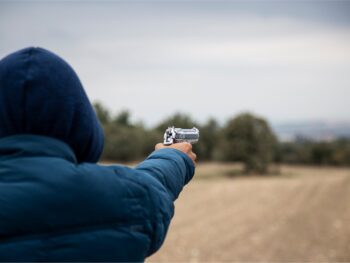In an effort to make sure that workplaces in Victoria, Australia meet all safety guidelines, inspectors recently focused in on more than 460 farms. The 12-month campaign by WorkSafe inspectors looked to help identify and eradicate the most common causes of injuries and fatalities in agricultural workplaces.
During the 12-month campaign, inspectors concentrated primarily on dairy and beef cattle farms and paid particular attention to dangerous machinery, animal handling practices and unsafe manual handling. In the 12 months to June 30, WorkSafe inspectors issued 375 improvement notices requiring issues be fixed. Another 64 breaches were able to be dealt with on the spot by employers.
Much of the Focus Centered on Machinery
Of the 375 notices, almost 30 percent related to machinery. Of that 30 percent, almost half involved poor guarding. WorkSafe chief executive Denise Cosgrove said the safety issues surrounding machinery remained a major concern. “Machinery and attachments that are used incorrectly, poorly maintained and inadequately guarded is still the biggest problem on farms,” Cosgrove said. “Farmers are practical and creative but machinery should only be used for the purpose it’s intended. “
Other safety issues identified during the campaign included poor ladder access to silos, slips, trips and fall hazards, a lack of personal protective equipment and failure to have a chemical register and Material Safety Data Sheets that provide safe storage and handling advice. According to Cosgrove, dairy and beef farms had been given priority because around 50 percent of agriculture’s 1,000 serious injury claims over the past two years occurred on livestock farms.
Of the nine fatalities on Victorian farms over the same period, seven involved machinery and two involved handling of animals.“The cost and impact an injury or fatality has on the individual, the family business and the community, particularly in country areas, is immense,” Cosgrove pointed out.
“We know that 1,000 serious injury claims are only the tip of the iceberg as many farmers operate hobby farms or are self-employed and do not fall within the workers compensation system. Our priority is to ensure workplaces are as safe as possible and that workers get to go home to loved ones at the end of the day,” Cosgrove added.
Safety tips for farms:
- Make sure livestock handling equipment and infrastructure is suitable for the breed characteristics and cattle size
- Where possible, always keep people and animals separate
- Install gates with spring loaded latches in yards
- Install cat walks on loading race and ensure ramps have sides covered
- Ensure race design does not allow cattle to turn around
- Ensure yard design allows for safe exit in case of emergency
- Adopt safe animal handling practices
- Maintain gates, pens and yards
- Select the most suitable vehicle for the task
- Ensure vehicles are used in accordance with the manufacturer’s instructions and for the purpose for which they were designed, that tractors have roll over protection and quad bike operators wear a helmet
Author Michael B. Stack, CPA, Director of Operations, Amaxx Risk Solutions, Inc. is an expert in employer communication systems and part of the Amaxx team helping companies reduce their workers compensation costs by 20% to 50%. He is a writer, speaker, and website publisher. www.reduceyourworkerscomp.com. Contact: mstack@reduceyourworkerscomp.com.
©2013 Amaxx Risk Solutions, Inc. All rights reserved under International Copyright Law.











